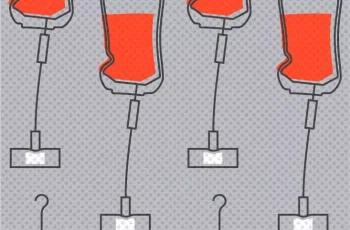Vulvodynia is a chronic condition characterized by persistent pain around the vulva, the vaginal opening, lasting at least 12 weeks without a clear cause. Affecting about 16% of females in the United States, vulvodynia significantly impacts quality of life, causing discomfort during activities like sitting, walking, or sexual intercourse. Symptoms such as burning, itching, and soreness can persist for months or years if untreated, often worsening over time. Many women delay seeking medical help due to embarrassment or stigma, which can exacerbate symptoms and prolong suffering. Early diagnosis is critical for effective management, and home remedies can serve as complementary or alternative strategies to alleviate vulvar pain.

Symptoms of Vulvodynia
The hallmark symptom of vulvodynia is chronic vulvar pain, which may be constant or intermittent, localized (e.g., at the vaginal opening) or generalized across the vulvar region. Other symptoms include:
- Burning or stinging sensations.
- Vulvar itching or irritation.
- Soreness or rawness.
- Painful intercourse (dyspareunia).
- Mild to severe vulvar inflammation.
These symptoms can vary in intensity, disrupting daily activities and emotional well-being. Recognizing these signs is crucial for timely intervention.
Contributing Factors
While the exact cause of vulvodynia remains unknown, several factors may contribute:
- Chronic Infections: Recurrent bacterial or fungal vaginal infections can irritate vulvar tissue.
- Nerve Dysfunction: Past vaginal injuries or surgeries may affect nerve sensitivity, amplifying pain signals.
- Hormonal Changes: Fluctuations during menopause or pregnancy may alter vulvar tissue health.
- Allergies/Sensitivities: Chemical irritants in soaps, shampoos, perfumed sanitary products, or synthetic fabrics can trigger discomfort.
- Pelvic Floor Dysfunction: Weak or tense pelvic floor muscles may exacerbate vulvar pain.
Understanding these factors helps tailor management strategies, combining medical and home-based approaches.
Challenges in Diagnosis
Diagnosing vulvodynia is challenging due to its idiopathic nature and overlapping symptoms with other conditions like infections or dermatological issues. Healthcare providers typically use a process of elimination, conducting physical exams, swab tests, or biopsies to rule out other causes. Patients often face psychological barriers, such as shame or fear of judgment, which delay diagnosis. Open communication with a trusted healthcare provider is essential for accurate diagnosis and effective treatment planning.
Home Remedies for Vulvodynia
Several home remedies can help alleviate vulvar pain and address potential contributing factors. These should be used cautiously, with medical consultation for persistent symptoms:
Hot Compression
Applying warm heat enhances blood flow, relaxing vulvar muscles and reducing pain from muscle tension. Warm a clean towel in a microwave to a comfortable temperature and place it on the vulva for 15-20 minutes, 1-2 times daily. Ensure the heat is not too intense to avoid burns.
Cold Compression
Cold therapy numbs nerve endings, reducing pain signal transmission. Wrap ice cubes in a thick cloth or towel (never apply ice directly to the skin) and apply to the vulva for 10-15 minutes. Use sparingly to prevent tissue damage.
Salt Water Bath
Epsom salt baths relax muscles, reduce inflammation, and may clear minor infections. Add 2-3 cups of Epsom salt to warm bathwater and soak for 20-30 minutes daily. Pat the vulva dry gently to avoid irritation.
Coconut Oil
Coconut oil’s antibacterial and moisturizing properties help maintain vaginal pH, reduce dryness, and soothe irritation. Apply a small amount with a clean cotton swab to the vulva twice daily. Choose organic, unrefined coconut oil for best results.
Neem-Water Bath
Neem leaves contain Azadirachta, an antiseptic compound effective against bacterial and fungal infections. Boil a handful of washed neem leaves, strain the liquid, and add to bathwater for a 15-20 minute soak. Alternatively, use cooled neem water to wash the vulva or apply neem oil sparingly.
Cranberry Juice
Cranberry juice’s antifungal properties may help manage fungal infections contributing to vulvodynia. Drink 1-2 cups of freshly prepared cranberry juice (blend cranberries, water, lemon, optional honey) daily. Avoid commercial juices with added sugars or preservatives.
Lifestyle and Dietary Changes
Lifestyle and dietary adjustments are critical for managing vulvodynia and preventing symptom flare-ups:
- Clothing Choices: Wear loose, light-colored cotton underwear and avoid tight clothing to minimize irritation and pressure on the vulva.
- Hygiene Practices: Use unscented, chemical-free soaps, tampons, pads, and toilet paper. Rinse the vulva with lukewarm water and pat dry gently.
- Moisturization: Apply natural oils (e.g., coconut or almond) or hypoallergenic moisturizers to prevent dryness.
- Activity Modifications: Avoid activities like cycling or horseback riding that exert pressure on the vulva.
- Dietary Adjustments: Follow a low-oxalate diet, avoiding high-oxalate foods like spinach, nuts, beets, berries, soy, and whole wheat, as high urine oxalate levels may worsen symptoms in some patients. Reduce acidic foods (e.g., chocolate, spicy foods, nuts) and potential IBS triggers (e.g., gluten) to minimize irritation.
- Stress Management: Practice relaxation techniques like yoga or meditation, as stress can exacerbate pain perception.
Psychological Impact and Support
Vulvodynia can lead to emotional distress, including anxiety, depression, or reduced self-esteem, particularly due to its impact on sexual intimacy. Seeking support from a counselor or support groups can help address these challenges. Partners’ understanding and patience are also vital for emotional well-being.

Conclusion
Vulvodynia is a debilitating condition causing chronic vulvar pain, significantly affecting quality of life. Home remedies like hot/cold compressions, Epsom salt baths, coconut oil, neem baths, and cranberry juice may alleviate symptoms, particularly when paired with lifestyle and dietary changes. Maintaining vulvar hygiene and avoiding irritants are essential for long-term management. However, if symptoms persist or worsen, consulting a healthcare provider for a thorough diagnosis and medical treatment is critical. Combining home remedies with professional care offers the best chance for effective recovery and improved well-being.



